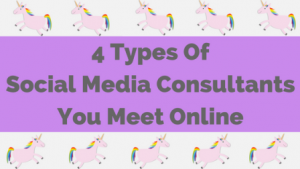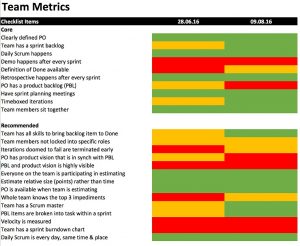Is digital marketing headed for a big-time crash? Columnist Lewis Gersh thinks so — and he offers marketers advice on how to survive the impact.

If there’s one certainty about bubbles, it’s that eventually, they burst. We’ve seen it happen time and again across various marketing channels. Marketers find an approach that delivers a great initial return on investment, but then they abuse it to the point that it becomes disrespectful to the consumer, who then ignores that medium as a matter of course. ROI plummets, and marketers actually load up more on the same strategy to combat those declines. Rinse. Repeat.
That moment of reckoning is imminent in digital marketing. It’s repeating a cycle that dates back to the earliest days of traveling salesmen. Think of those “No solicitors” signs on gates and doors as an early version of today’s ad blockers.
The only remaining questions are: What will trigger the tipping point in digital? And what, if anything, can digital marketers do to survive the impact?
The numbers tell the tale, and it’s become a horror story
On the surface, digital marketing has enjoyed robust growth over the last two decades. The market has grown from a few hundred companies and a few billion dollars in the mid-1990s to over 3,000 companies and $60+ billion in revenue.
Along the way, incredible efficiencies have been created, taking us from hard-coded banner ads with faxed insertion orders to today’s programmatic solutions. Beneath this seemingly healthy façade, however, is rampant dry rot.
It starts with the 3,000+ companies that now serve the digital ecosystem. This fragmentation has become too complex on the back end. Everyone has lost track of what’s happening to the consumer at the front end.
Banner blindness, email spam, ad fraud, viewability and, worst of all, disruption of the user experience have led to decreasing efficacy that is truly pitiful.
Two statistics tell you all you really need to know. In digital, 0.03 percent is considered a really good impression-to-conversion rate. And 40 percent of reported page views constitute fraud, involving bots or other forms of trickery.
If the consumer suffers, your brand suffers
It’s only a matter of time until advertisers rebel against a system that provides so little return yet expects them to allocate almost half their budget to “breakage” that is clearly preventable.
But even if the advertisers don’t rebel, consumers will. Many brands have reacted to declining performance by doubling down on efficiency while continuing to erode efficacy.
Through digital retargeting, a consumer can easily be served 40 ads or more in a month based on an item viewed only once during a casual search. Such blatant disrespect for the user experience has triggered a severe backlash. Is it a surprise that more than 70 percent of mobile users are either using ad blockers or would like to download an app to help them block ads?
Remember that advertising is part of your customer experience
The good news is that more and more digital marketers are aware of these problems and want to fix them. If digital media dropped by 50 percent in total ad spend overnight but eliminated all the bad actors in the process, almost everyone on the buy-side of the industry would be cheering.
So, as a digital marketer, how do you get there? You can start by sticking with reliable, top-tier ad tech and publisher brands.
Insist on programmatic ads that guarantee viewability with no fraud. Demand transparency in knowing where your ad is going in terms of relevance, so that the message and the medium are aligned.
The days when it didn’t matter where the ad went, as long as it matched the behavioral data of the user, are long gone. You also have to be careful to work with publishers who provide a good experience for their viewers so that your ad is presented in a positive user environment.
You’re going to hear more and more about situational targeting, which requires ever-stronger partnerships between brands and publishers. That’s critical.
Don’t let anyone tell you that context doesn’t matter. Of course it does, as Tom Fishburne brilliantly illustrated a while back in one of his more brilliant cartoons in Marketoonist, about programmatic placements.
No magic potion will prevent a downturn
Will digital marketing die? No. Will brands invest less? Yes, as we’ve already seen with display ad weakness and a leveling off in search. They will seek out other media, just like they shifted their print and TV budgets in the past.
But a correction will be a healthy step. It will lead to a smaller pool of more powerful vendors, stronger results and a more sustainable industry through a better user experience for the consumer.
Some opinions expressed in this article may be those of a guest author and not necessarily Marketing Land. Staff authors are listed here.
Marketing Land – Internet Marketing News, Strategies & Tips
(61)









